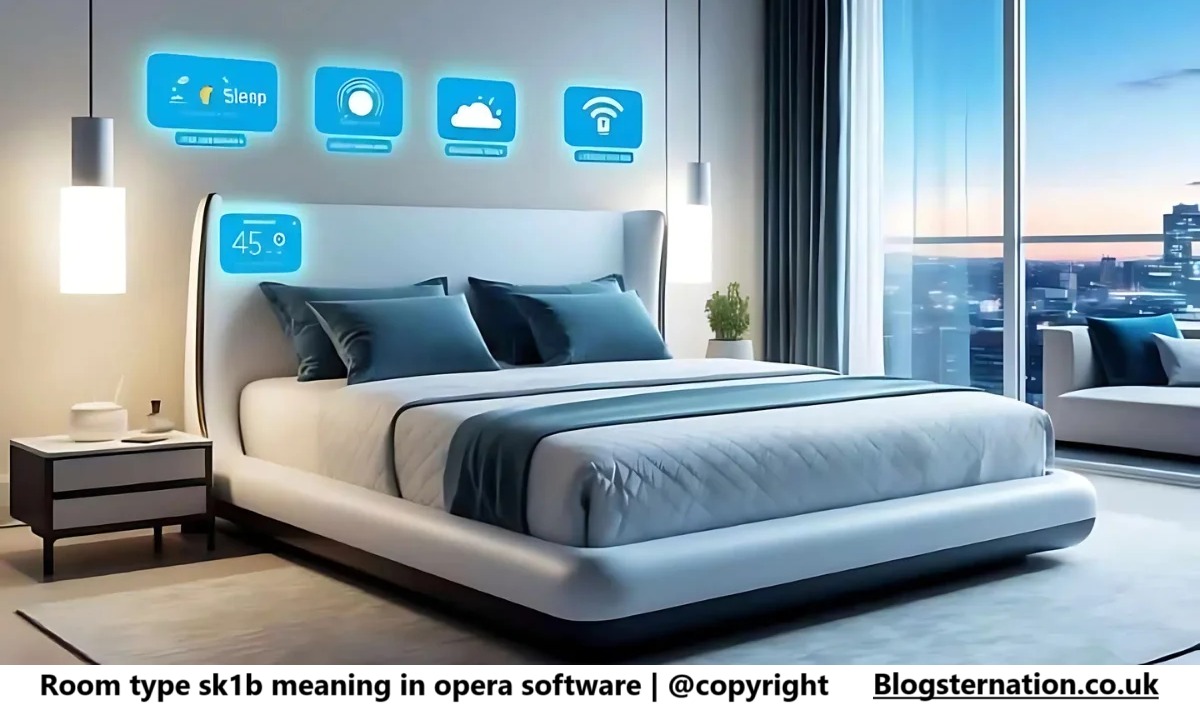Understanding Room Type SK1B in Opera Software

When navigating the complexities of the hospitality industry, especially within hotel management systems like Opera, encountering cryptic codes and abbreviations is common. Among these is the mysterious “SK1B,” a term that has left many hoteliers and industry professionals scratching their heads. If you’ve ever wondered what this code signifies, you’re not alone.
Let’s dive deep into its meaning, purpose, and how it fits into the broader context of hotel operations.
What is Opera Software?
Before we decode SK1B, it’s essential to understand the platform where this terminology resides. Opera is a premier Property Management System (PMS) widely used in the hospitality industry. It streamlines hotel operations by managing reservations, room assignments, housekeeping, billing, and much more. This robust software is pivotal in ensuring that hotels operate efficiently, delivering seamless experiences for both staff and guests.
One standout feature of Opera is its ability to categorize rooms and define them through specific codes, often reflecting unique configurations or designations. These codes play a significant role in operational efficiency and guest satisfaction.
Deciphering SK1B
SK1B is a room type code commonly encountered in Opera. Let’s break it down to understand its components:
- “S” – Suite or Single: The “S” typically stands for “Suite” or “Single,” indicating the room’s base classification. A suite generally implies a more luxurious accommodation, often comprising multiple rooms like a bedroom and living area. If it’s designated for singles, it’s tailored for solo travelers, usually with a single bed setup.
- “K” – King Bed: The “K” specifies the bed type—in this case, a king-sized bed. This is a critical feature for guests seeking extra space and comfort in their sleeping arrangements.
- “1” – Occupancy or Configuration: The “1” might denote single occupancy or a unique room configuration. In Opera, numbers often provide details about layout or occupancy limits.
- “B” – Balcony or Special Feature: The “B” often represents a balcony, a sought-after feature for many guests. Rooms with balconies tend to command higher rates due to the added amenity of outdoor space and scenic views.
When combined, SK1B describes a specific room type—a King Suite or Single King room with a balcony. However, exact definitions can vary depending on a hotel’s internal configuration within Opera, so it’s always a good idea to consult the property’s customized coding system.
Why is Room Coding Important?
Room codes like SK1B serve multiple purposes in the hospitality industry:
- Streamlined Operations: Room type codes allow staff to quickly identify a room’s features and allocate them appropriately. For example, when assigning rooms to VIP guests or families, specific codes ensure the chosen room meets their preferences.
- Maximizing Revenue: With detailed room codes, revenue managers can adjust pricing dynamically. A room with a king bed and balcony (e.g., SK1B) might be priced higher than a standard room due to its additional amenities.
- Guest Satisfaction: Accurate room categorization ensures guests receive accommodations aligned with their expectations. Misallocating a guest who booked a suite to a standard room can result in dissatisfaction and negative reviews.
- Efficient Housekeeping: Housekeeping teams rely on these codes to prioritize and plan their cleaning schedules. A suite with a balcony might require more time and attention than a standard single room.
How to Customize Room Codes in Opera
Opera’s flexibility allows hotels to customize room type codes based on their unique inventory. Here’s a step-by-step overview of how to tailor these codes:
- Inventory Assessment: Begin by reviewing your property’s room inventory. Identify key features, such as bed types, views, and additional amenities (e.g., balconies, kitchens, or whirlpools).
- Define Categories: Group rooms into categories based on their features. For instance, you might have categories like Standard, Deluxe, Suite, and Specialty Rooms.
- Create Descriptive Codes: Use a logical and intuitive coding system. Ensure that each code is self-explanatory for staff. For example, “SK1B” could represent “Suite King Balcony,” while “DQ2O” might stand for “Double Queen Ocean View.”
- Input Codes into Opera: Enter the codes and their descriptions into Opera. This step is crucial for integrating them into reservation, housekeeping, and billing modules.
- Train Staff: Ensure all relevant departments—front desk, housekeeping, and management—understand the new codes and their meanings.
Common Challenges with Room Codes
While room codes like SK1B enhance efficiency, they can also present challenges:
- Overcomplication: Overly complex codes may confuse staff, leading to errors in room assignments or miscommunication with guests.
- Inconsistencies: If codes are not standardized across properties in a chain, it can create confusion during cross-property bookings.
- System Updates: Frequent updates to room inventory or Opera’s software may require revisiting and revising existing codes.
Tips for Effective Room Coding
To avoid these pitfalls, consider the following best practices:
- Keep It Simple: Create codes that are easy to understand and remember.
- Regularly Update Codes: As your property evolves, update codes to reflect changes in inventory or guest preferences.
- Ensure Consistency: Maintain uniformity across all properties in your portfolio if you manage a hotel chain.
- Leverage Opera Reports: Utilize Opera’s reporting tools to analyze room performance. Identify which room types are most popular and adjust pricing or marketing strategies accordingly.
Frequently Asked Questions (FAQs)
- What does SK1B stand for?
SK1B typically represents a “Suite King with Balcony.” However, the exact meaning can vary depending on the hotel’s customized room coding system.
- Can room codes be customized in Opera?
Yes, Opera allows full customization of room codes to suit a property’s unique inventory and operational needs.
- How do room codes impact revenue management?
Room codes help revenue managers adjust pricing dynamically based on features such as bed type, view, and amenities, ensuring optimal revenue generation.
- What happens if room codes are not standardized?
Lack of standardization can lead to confusion, errors in room assignments, and challenges during cross-property bookings for hotel chains.
- How can staff be trained to use room codes effectively?
Conduct regular training sessions and provide clear documentation explaining the meaning and purpose of each code. Incorporating real-life scenarios during training can enhance understanding.
Conclusion
Room type codes like SK1B are the unsung heroes of hotel operations. They simplify processes, enhance guest satisfaction, and drive revenue. By understanding and optimizing these codes within Opera, hoteliers can unlock the full potential of their property management system. Whether you’re a seasoned hospitality professional or new to the industry, embracing the intricacies of room coding can lead to more efficient operations and happier guests.
So, the next time you see SK1B on your Opera dashboard, you’ll know exactly what it means and why it matters.



